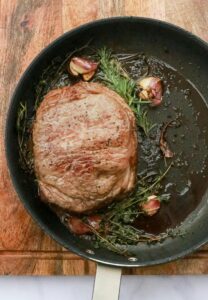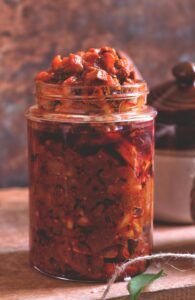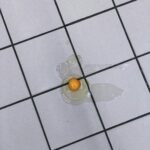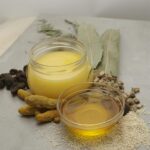Cooking is not just an art; it’s a fascinating blend of science and creativity that transforms raw ingredients into delightful dishes. Understanding the scientific principles behind cooking can elevate your culinary skills, making the process more enjoyable and your meals more flavorful.
The Maillard Reaction: The Secret Behind Browning
One of the fundamental scientific processes in cooking is the Maillard Reaction. This chemical reaction occurs between amino acids and reducing sugars when exposed to heat, leading to the browning of food and developing of complex flavors. It’s responsible for the savory crust on a seared steak, baked bread’s golden hue, and roasted coffee’s rich taste. The Maillard Reaction typically begins at temperatures above 285°F (140°C).

Emulsification: Blending Oil and Water
Ever wondered how mayonnaise achieves its creamy consistency? The answer lies in emulsification, a process that allows two immiscible liquids, like oil and water, to mix. By vigorously whisking oil into egg yolks (which contain emulsifiers like lecithin), tiny droplets of oil are dispersed throughout the water, creating a stable mixture. This principle is also behind the smooth texture of hollandaise sauce and vinaigrettes.

The Role of Heat: Conduction, Convection, and Radiation
Cooking involves transferring heat to food, and this can occur through three primary methods:
- Conduction: Direct transfer of heat through contact, such as a steak sizzling on a hot pan.
- Convection: Heat transfer through fluids (liquids or gases), like boiling pasta in water or baking bread in an oven where hot air circulates.
- Radiation: Heat transfer through electromagnetic waves, such as grilling where infrared radiation cooks the food.
Understanding these methods helps in selecting appropriate cooking techniques for different dishes.
The Science of Seasoning: Salt’s Impact
Salt is more than just a flavor enhancer; it plays a crucial role in the cooking process. Salt can draw out moisture through osmosis, tenderize proteins, and even suppress bitterness while enhancing sweetness and other flavors. Proper seasoning can make the difference between a bland dish and a memorable meal.

Fermentation: Nature’s Transformation
Fermentation is a metabolic process where microorganisms like bacteria and yeast convert sugars into acids, gases, or alcohol. This ancient technique not only preserves food but also develops unique flavors and textures. Yogurt, sauerkraut, sourdough bread, and kimchi are all products of fermentation, each with distinct tastes resulting from this biochemical process.

Recommended Reading: Delving Deeper into Culinary Science
For those eager to explore the science behind cooking further, here are some insightful books:
- “On Food and Cooking: The Science and Lore of the Kitchen” by Harold McGee: A comprehensive guide that delves into the chemistry and history of various foods and cooking methods.
- “The Science of Cooking” by Peter Barham: This book explains the scientific principles underlying everyday cooking techniques, making it accessible to both novice and experienced cooks.
- “Easy Culinary Science for Better Cooking” by Jessica Gavin: Combining practical recipes with scientific explanations, this book helps readers understand the ‘why’ behind cooking methods.

Embracing the science of cooking not only enhances your culinary creations but also deepens your appreciation for the art and craft of preparing food. By understanding the principles at play, you can experiment with confidence, innovate in your kitchen, and consistently delight your taste buds.






